Car Culture: Then, Now and Future
Interview by Tish Greenwood
Jonathan Michael Castillo’s rearview portraits of unsuspecting drivers is Car Culture, an ongoing photography project that employs state-of-the-art camera and lighting equipment, along with a bit of bravado, to capture LA commuter moments in life.
At first glance, Castillo assumes the role of photographer as archivist, preserving the southland vernacular figured in the culture of our roads – a quasi-typology of a society defined by cars and settings. In his images, a chronicle develops about time, place and society situated on the streets of his hometown. But his images are not clinical; they are infused with drama, stage-lit and with minor post-production to enhance the cinematic appeal…the very essence of LA.
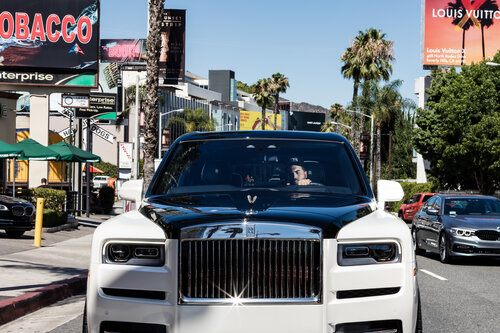 On another level, his work compels us to acknowledge that though we might feel insulated in our cars; we are constantly surrounded and observed by other drivers. Sometimes we connect with each other by smiling, other times through road rage, but most often it is the shared frustration of being stuck in LA traffic together.
On another level, his work compels us to acknowledge that though we might feel insulated in our cars; we are constantly surrounded and observed by other drivers. Sometimes we connect with each other by smiling, other times through road rage, but most often it is the shared frustration of being stuck in LA traffic together.
Now in a time of social quarantine and social distancing, the series also speaks upon how we are navigating the world today. With drive-thru services and curbside pick-ups becoming the norm, the car represents a way to keep sanitized during the pandemic storm. In 2020, when our foundation in the everyday routine has come unmoored, Car Culture exhibits a nostalgic hue. It signals us to reflect upon pre-pandemic times. The series also leads us to think about our collective future. Castillo’s work has staying power through its artistry, authenticity and democratization of subject-matter.
Below, Castillo candidly reviews the evolution of his undergraduate photography project and why it continues to drive him:
With Car Culture there are many ways someone might connect with the images. It could be through portraiture, it can be the looking at the cars, or even trying to figure out where the photographs were taken. Then for others, it’s the connection to art and conceptual photography or simply just the aesthetic elements of the work that interests them. What I hope is that people understand that the work may appear very straightforward but if you spend time with it and ask questions what emerges is something more nuanced and layered. That is the space where I think people can then come to a more personal understanding of what the work means to them.
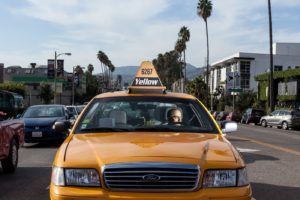 What attracts you first? The car or the person/people inside?
What attracts you first? The car or the person/people inside?
Sometimes it is the car that attracts me or what’s in the car or it’s capturing those introspective moments we have in our cars. Other times, it’s how all these things are interacting (or not) with the space around the car. Ultimately, I am looking for images that stand out but not necessarily for extreme things. The goal isn’t to find the people and cars that feel like a spectacle but instead to spend time with the moments that are more everyday. I see driving as a cultural behavior that paradoxically isolates people and simultaneously groups them. I noticed how the car functions to isolate people from others just several feet away. We all participate in this activity, but we have little or no communication between each other while doing it. Car Culture shows that we are all part of this larger group system of driving in Southern California.
Why does Car Culture only show SoCal drivers?
I’ve considered taking the project on the road to other cities but after thinking about it a lot and talking with other people I decided that the project really is as much about the greater Los Angeles region as it is about the individuals in my images.
As a collective portrait of greater Los Angeles, it has become a time capsule of how the landscape has changed and stayed the same. The billboards, style of cars and other subtle indicators all tell you roughly what was going on in the broader culture at the time.
I feel the world has turned upside down…and it happened so fast. It is amazing how even your latest Car Culture portraits seem nostalgic now. Have you reflected about the original intention of the series and how it is evolving, especially now when our cars have become one of our only escapes during a lockdown?
It is interesting to me how the project has broadened over the years. My Car Culture work does have an element of isolation that feels different now with COVID-19. However, the process and look of the images has remained the same.
 As an ongoing series, I notice that Uber and Lyft were not around when I started this project in 2008. Now, I see these stickers on cars in my more recent images. If there is widespread adoption of self-driving cars in the future, I believe that will be the end of my project. That’s when I feel there will be some true nostalgia for the images I’ve made to this point. It’s then when I see Car Culture being much more of a cultural artifact. It’s both exciting and disheartening to imagine that I could very likely do this project long enough to see that happen.
As an ongoing series, I notice that Uber and Lyft were not around when I started this project in 2008. Now, I see these stickers on cars in my more recent images. If there is widespread adoption of self-driving cars in the future, I believe that will be the end of my project. That’s when I feel there will be some true nostalgia for the images I’ve made to this point. It’s then when I see Car Culture being much more of a cultural artifact. It’s both exciting and disheartening to imagine that I could very likely do this project long enough to see that happen.
Not only an archive, but do you see your work as a typology of society? If yes, what have you observed and how has this progressed now with the current Social Reform Movements?
I would say the work uses a typology strategy to unify the people and their cars as part of something larger while also leaving room in the images for the context of place to have an equal role. In this way the work is as much about the people and their cars as it is about Los Angeles. When you photograph everyone in a formulaic way and present the photographs together it becomes about a group of people as well as the differences within that group. There’s a democratization of people in that everyone is photographed in the same way. No person is more important than another person in this series but there’s surely differences between people. How people dress, the cars they drive and the way they accessorize are statements about wealth, class, group status, politics and any number of other things.
I am interested in how people navigate and are treated by systems like immigration bureaucracy, financial structures that create and incentivize the creation of debt as well as capitalism itself. When I started Car Culture, it was my one of my first steps towards photography that engages with societal concerns.
While the work has artificial components like lighting and editing, I want the essence of the work to reflect the world as it is, not what I imagine it to be. Car Culture is about how people exist within a city that for the most part requires a culture of driving for full participation.
 If you don’t have a car in Los Angeles your job opportunities are limited, your social circles are bounded and your overall ability to succeed is greatly reduced. Black and brown communities often have less access to many things that provide the same opportunities as predominantly white communities.
If you don’t have a car in Los Angeles your job opportunities are limited, your social circles are bounded and your overall ability to succeed is greatly reduced. Black and brown communities often have less access to many things that provide the same opportunities as predominantly white communities.
When I started this project, I did want it to reflect the diversity that I see and love in Los Angeles but I wasn’t really thinking of this work as having a connection to social issues in the way that my more recent work is much more directly engaging with specific themes.
At CMATO, a few board members stated that your work was compelling as it speaks directly to us being in our own little bubbles – and again – especially during COVID-19, our bubbles can equate safety, quarantine, isolation. Your portraits invade these bubbles and provide candid images of unsuspecting drivers. Are you making a statement by approaching your work this way? If so, what?
My initial inspiration for this series, was Philip-Lorca diCorcia’s project Heads where he photographed pedestrians in New York using artificial lighting. They too are candid photographs of people on the street.
To do Car Culture, I had to do something to make the connection between the individual, Los Angeles and the idea of a culture of driving. That required me to use techniques that might seem somewhat invasive and interrupt people from those little bubbles inside their cars. Specifically, the use of artificial flash lighting does get people’s attention when I am making these images.
This process allows me to make the images candidly but has the side effect of often letting people know that something just happened. People may or may not realize completely that they have been photographed but there’s often a moment after the image is made where whatever solitude or isolation people were experiencing is interrupted.
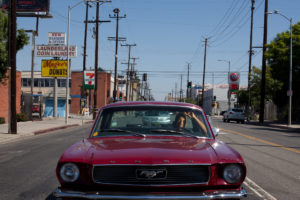 Are you tired of Car Culture? Where do you see it going?
Are you tired of Car Culture? Where do you see it going?
What keeps me excited about Car Culture is revisiting or continuing this series when I’m back in my hometown. I do find it interesting that this project keeps coming back around and that it continues to resonate with people as the years are going by.
I wouldn’t say I’m tired of it but I couldn’t just do that project alone. I work mostly on Car Culture when I am in Los Angeles. I have several projects I work on in when I am in Chicago, Hong Kong or China. While photography is my primary medium; I also make paper, videos and projections onto sculpture.
It is interesting to me how not only this series but all my work is seeming to take on new meaning or urgency. My Student Loan Debt series is becoming more relevant by the day as the President and Congress talk about student loan deferment being part of whatever new COVID-19 relief bill is passed or not. My Immigrant Owned photographic series is especially poignant now as many small businesses are suffering and immigrant/minority communities are one of the hardest hit by every aspect of the pandemic. I see these small businesses trying to realize the American Dream through our larger capitalist society that seemingly is making it harder every year to compete.
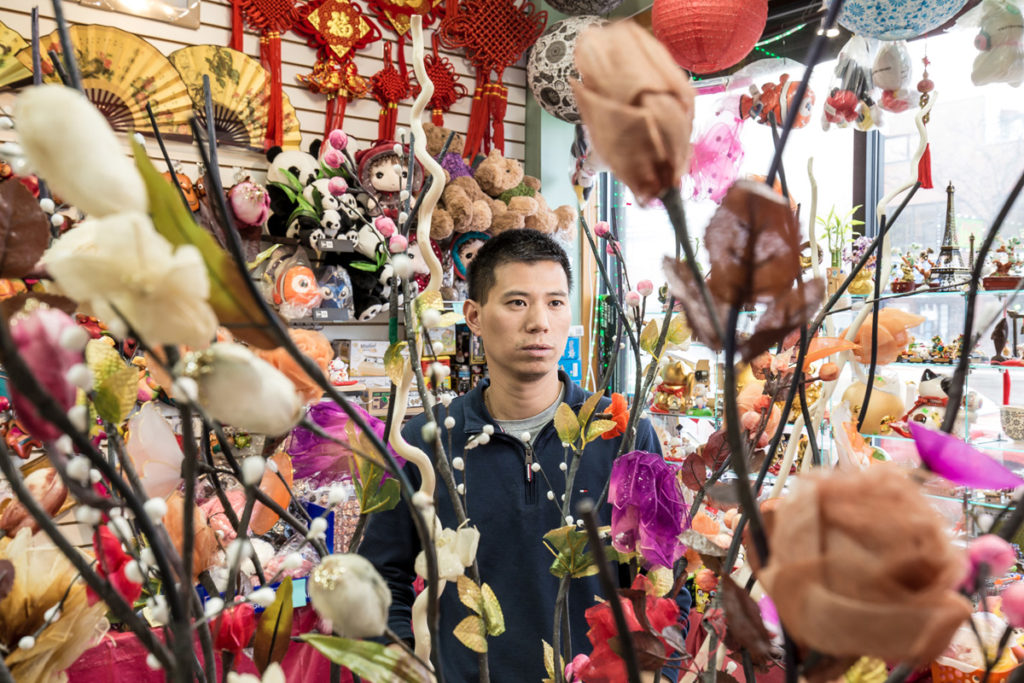
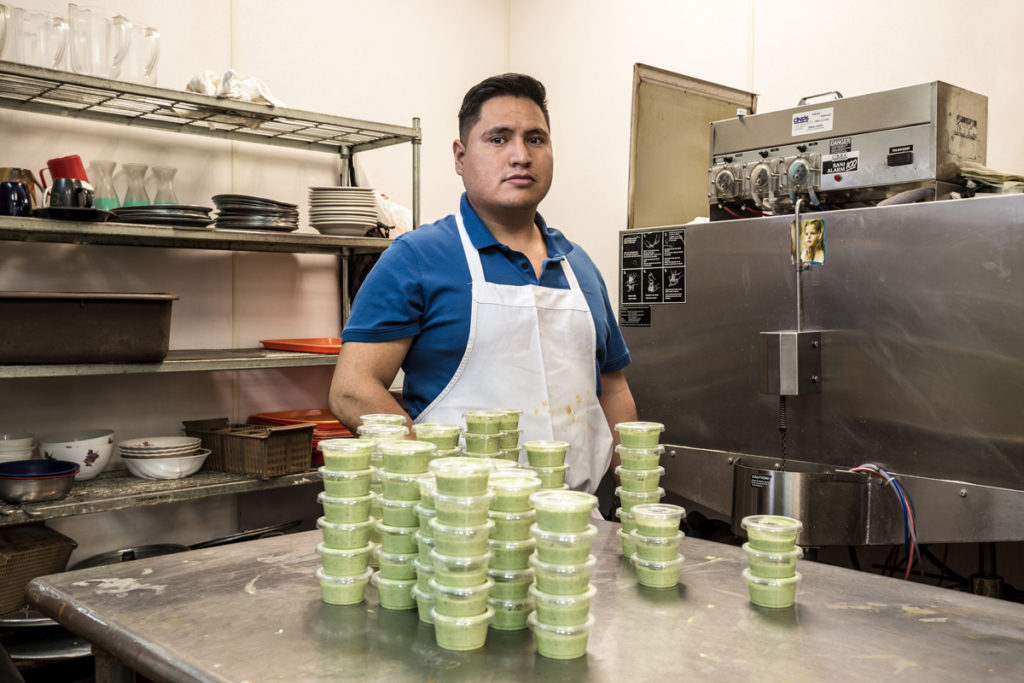
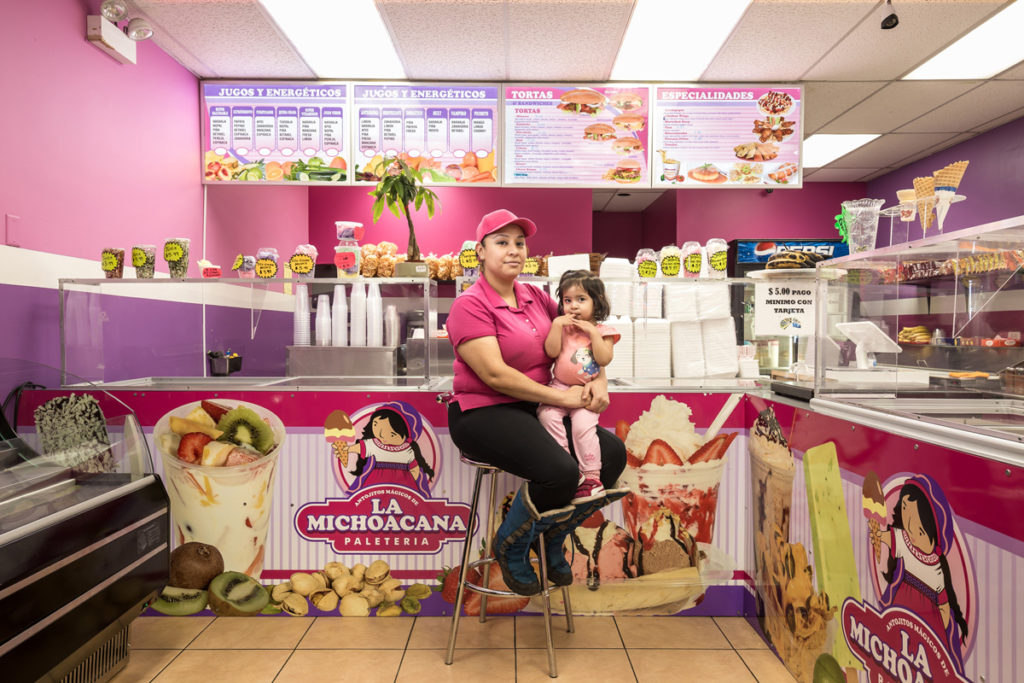
To assume that there is a proper path to success ignores that reality is much more complicated. Student loan debt is overwhelming and downright dream crushing for many people; owning a small business is more and more like a quixotic quest; and our immigration system prioritizes those with money from wealthier nations while punishing those who might try and come here as refugees, asylum seekers or as low income immigrants. This isn’t even considering what it’s like for someone here who’s undocumented.
These are all issues that are deeply connected to my personal experiences, those of my family and friends. I make work about issues that I see affecting the people I care about and through that address more universal experiences.
Finally, does anyone walk in LA?
I’ll answer that with this video I found while looking for the song by Missing Persons – Walking in L.A.
